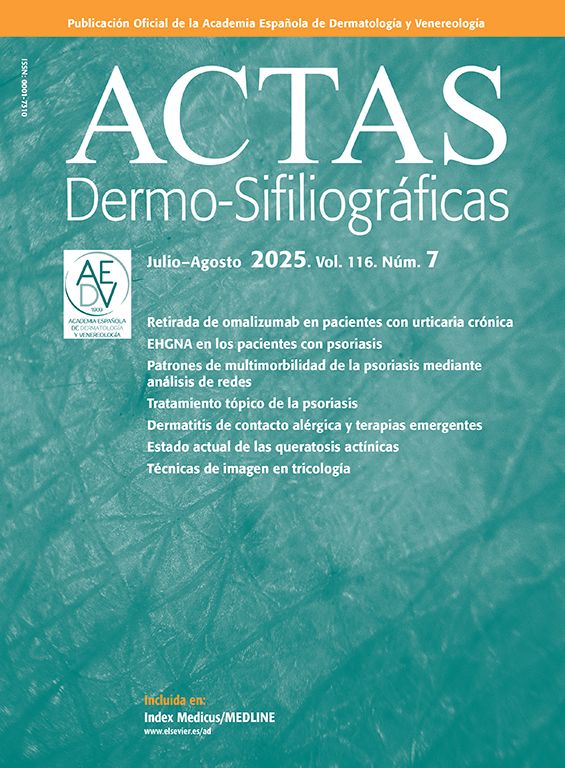A 73-year-old woman being monitored for psoriasis received acitretin therapy reported increased hair loss with diffuse thinning and curling of her hair (figure 1A). On examination, her hair appeared dry, curly, and lackluster, and the trichoscopy revealed flattened and twisted shafts. The patient insisted that she had previously had straight hair and due to the possible association with the start of systemic therapy, we replaced acitretin with apremilast, which solved the case 6 months later (figure 1B). The progressive and acquired curling of the hair is considered a variant of woolly hair, and occurs due to a change in the inner root sheath of the hair follicle. Although it is more common in men, some cases have also been reported in postmenopausal women associated with the use of oral retinoids (mainly acitretin, etretinate, alitretinoin, and isotretinoin), which resolve 3 to 6 months after discontinuing the drug. Clinically, it is characterized by the appearance of curly, fine, and flattened hairs with longitudinal twists. Pili torti is defined as a flattened and twisted hair shaft on its own axis with angles of 90°, 180°, and up to 360°. Acquired cases are also associated with the use of oral retinoids, mainly isotretinoin.
The Impact Factor measures the average number of citations received in a particular year by papers published in the journal during the two preceding years.
© Clarivate Analytics, Journal Citation Reports 2025
SRJ is a prestige metric based on the idea that not all citations are the same. SJR uses a similar algorithm as the Google page rank; it provides a quantitative and qualitative measure of the journal's impact.
See moreSNIP measures contextual citation impact by wighting citations based on the total number of citations in a subject field.
See more





